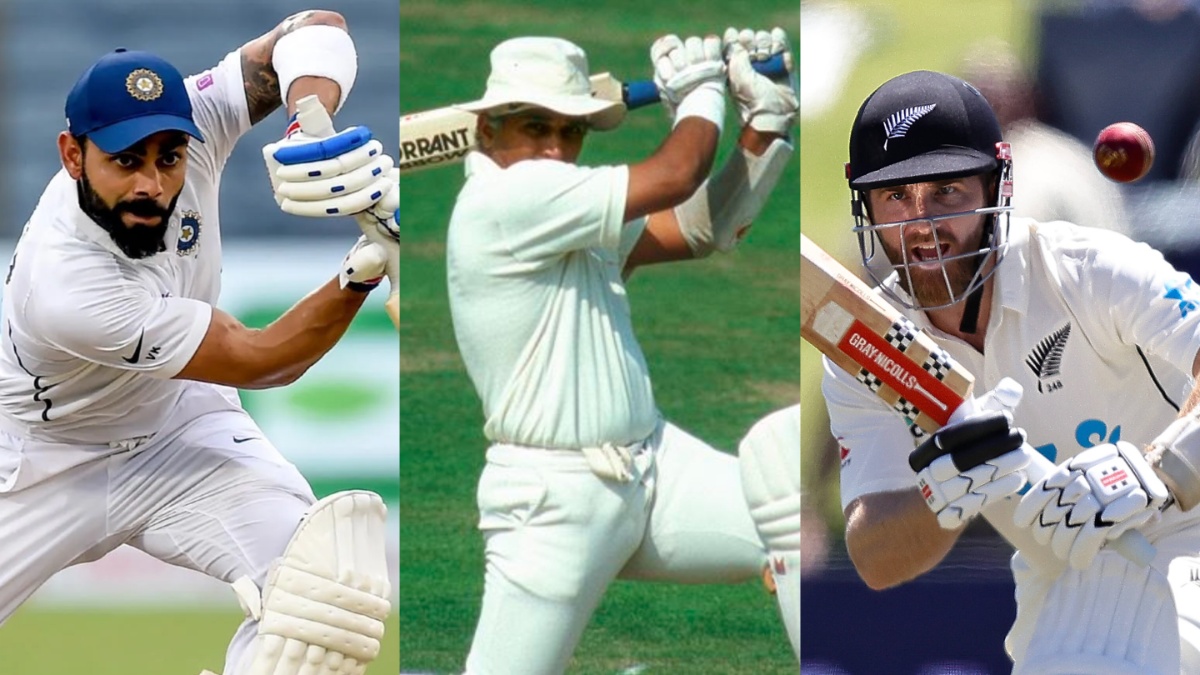Written By:- Laksh Manan
Test cricket is often hailed as the ultimate format of the game, a true test of skill, mental strength, and endurance. Nowhere is this more evident than in the fourth innings of a Test match—a phase where pitches deteriorate, bowlers dominate, and pressure becomes a palpable force. The once-friendly playing surface turns treacherous, with cracks and rough patches creating variable bounce, reverse swing, and ample turn for spinners.
In these situations, even the most accomplished batters can struggle to navigate the challenge. However, a few cricketers have risen to the occasion and thrived in this punishing arena, cementing their legacies as masters of the fourth innings.
The Struggles Of The Greats
Many cricket legends have stumbled in the face of the challenges presented in the fourth innings. Take Pakistan’s Inzamam-ul-Haq, a player renowned for his calm demeanor and elegance at the crease. Despite his formidable overall average of 49.6, he managed only 867 runs in 31 fourth-innings appearances at a modest average of 37.64.
Similarly, Sri Lankan legend Kumar Sangakkara, with an overall career average of 57.4, found the fourth
innings a significant challenge, managing an average of 41.53 in 35 innings. His teammate, Mahela Jayawardene scored 1,096 runs at 42.15 across 36 innings. Even AB de Villiers, South Africa’s Mr. 360, could only muster 1,141 runs at an average of 38.03 in 35 fourth-innings outings.
These examples underscore the difficulty of excelling when the game is at its most demanding. The wear and tear on the pitch, relentless bowling, and the weight of the match situation combine to create an environment where only the toughest batters survive. Despite their struggles, however, some players have defied the odds and shone in these high-pressure moments.
Also Read: IND vs BAN 2nd Test: Ashwin Has A Chance To Make This Big Record!
Indian Legends In The Fourth Innings: Gavaskar’s Supremacy
India has produced some of the greatest batters in the history of cricket, but even the best have found the fourth innings to be a formidable test. Sunil Gavaskar, often referred to as the “Little Master,” stands as a beacon of excellence in this context. Gavaskar amassed 1,398 runs in 33 fourth-innings appearances, averaging a remarkable 58.25. His success came not just from technical brilliance but also from unparalleled mental toughness. Whether facing the fearsome pace attacks of the West Indies or negotiating turning tracks in the subcontinent, Gavaskar consistently delivered when the stakes were highest.
In contrast, even Sachin Tendulkar, widely regarded as the greatest batter of all time, could not match Gavaskar’s consistency in the fourth innings. Tendulkar scored 1,625 runs in 60 innings at an average of 36.93—solid but reflective of the immense challenge posed by the fourth innings. Rahul Dravid, the “Wall” of Indian cricket, known for his resilience, fared somewhat better with 1,575 runs in 57 innings at an average of 40.38. Sourav Ganguly, the dynamic “Prince of Kolkata,” could only manage 864 runs in 32 innings at an average of 37.56. VVS Laxman, famed for his ability to torment Australia, scored 1,095 runs at an average of 40.55 in 38 innings.
When measured against these Indian greats, Gavaskar’s dominance in the fourth innings stands out. His average of 58.25 illustrates his unique ability to lead his team through the most difficult phases of a match, making him one of the finest fourth-innings batters in history.
The Modern “Fab Four”: A Battle Of Endurance
In the contemporary cricket world, four batters have often been compared and celebrated as the “Fab Four”: Virat Kohli, Kane Williamson, Joe Root, and Steve Smith. These modern greats have left an indelible mark on the game, but how do they fare in the fourth innings? Kane Williamson, New Zealand’s captain and a player known for his calm under pressure, stands out with 1,049 runs in just 27 fourth-innings appearances at an outstanding average of 55.21. His performances in crucial moments, despite New Zealand’s relatively limited Test schedule, underline his ability to rise to the occasion when the situation is most dire.
Virat Kohli, India’s prolific run-scorer, has also demonstrated his class in the fourth innings. He has accumulated 1,050 runs in 28 innings at an impressive average of 45.65, a testament to his ability to adapt to challenging conditions and lead from the front. England’s Joe Root has been a pillar of consistency for his team, scoring 1,346 runs in 47 fourth-innings innings at an average of 41.81. While respectable, Root’s fourth-innings average is slightly lower than those of Williamson and Kohli, highlighting the tough nature of this phase of the game.
Steve Smith, Australia’s batting phenomenon, has struggled more than his peers in the fourth innings. He has scored 765 runs in 29 innings, averaging 33.26. This discrepancy between his overall brilliance and his fourth-innings performance highlights just how difficult it is to maintain dominance when conditions turn against the batter.
Also Read: ‘Key To Bangladesh’s Success Against India Lies…., Shakib Al Hasan Said Before 2nd Test
Global Icons: Younis Khan And Graeme Smith
On the global stage, two players have distinguished themselves for their extraordinary fourth-innings performances: Pakistan’s Younis Khan and South Africa’s Graeme Smith. Younis Khan, Pakistan’s highest run-scorer in Test cricket, was a master of high-pressure situations. In the fourth innings, he accumulated 1,465 runs in 40 innings at a superb average of 50.51. His ability to absorb pressure and score runs against top-quality bowling attacks made him one of the most reliable batters in challenging conditions.
Graeme Smith, the former South African captain, was renowned for his grit and determination. He scored 1,611 runs in 41 fourth-innings appearances at an average of 51.96. Smith’s consistency, particularly as an opener, and his ability to bat for long periods in tough conditions set him apart from many of his peers.
Conclusion: Masters Of The Ultimate Test
The fourth innings of a Test match is the ultimate examination of a batter’s skill, mental fortitude, and resilience. Many cricketing legends, despite their brilliance in other phases of the game, have faltered under the pressure of deteriorating pitches and relentless bowling. Yet, a select few have thrived in these moments of adversity, leaving an indelible mark on the history of the game.
Players like Sunil Gavaskar, Kane Williamson, Younis Khan, and Graeme Smith have demonstrated their mastery of the fourth innings, consistently delivering when the stakes were at their highest. Their ability to navigate the toughest conditions and score crucial runs not only defined their careers but also exemplified the beauty and unpredictability of Test cricket.
In an era of fast-paced, limited-overs formats, these players remind us why Test cricket remains the pinnacle of the sport, where true greatness is measured by the ability to thrive when the game is at its toughest.














